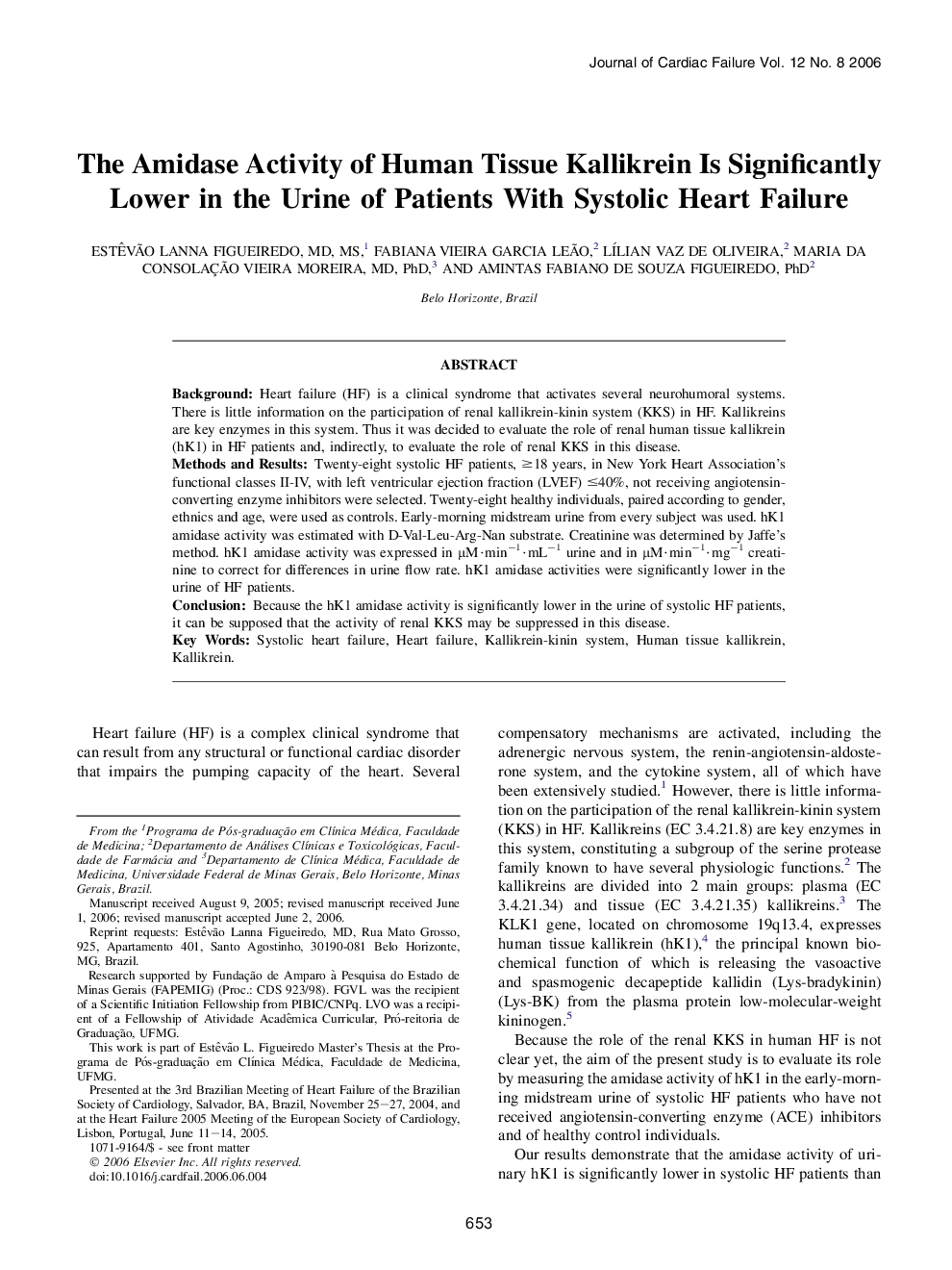| Article ID | Journal | Published Year | Pages | File Type |
|---|---|---|---|---|
| 2962545 | Journal of Cardiac Failure | 2006 | 6 Pages |
BackgroundHeart failure (HF) is a clinical syndrome that activates several neurohumoral systems. There is little information on the participation of renal kallikrein-kinin system (KKS) in HF. Kallikreins are key enzymes in this system. Thus it was decided to evaluate the role of renal human tissue kallikrein (hK1) in HF patients and, indirectly, to evaluate the role of renal KKS in this disease.Methods and ResultsTwenty-eight systolic HF patients, ≥18 years, in New York Heart Association's functional classes II-IV, with left ventricular ejection fraction (LVEF) ≤40%, not receiving angiotensin-converting enzyme inhibitors were selected. Twenty-eight healthy individuals, paired according to gender, ethnics and age, were used as controls. Early-morning midstream urine from every subject was used. hK1 amidase activity was estimated with D-Val-Leu-Arg-Nan substrate. Creatinine was determined by Jaffe's method. hK1 amidase activity was expressed in μM·min−1·mL−1 urine and in μM·min−1·mg−1 creatinine to correct for differences in urine flow rate. hK1 amidase activities were significantly lower in the urine of HF patients.ConclusionBecause the hK1 amidase activity is significantly lower in the urine of systolic HF patients, it can be supposed that the activity of renal KKS may be suppressed in this disease.
